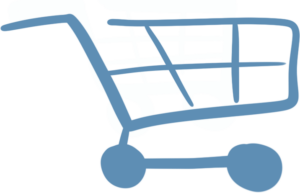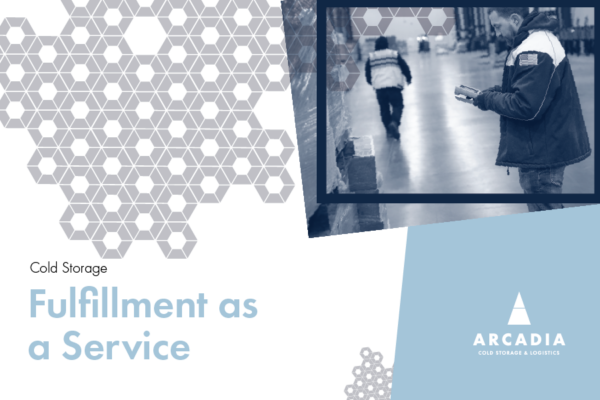Technological Advancements in the Cold Chain
One of the most significant trends in cold chain logistics is the adoption of advanced technologies. The Internet of Things (IoT), blockchain, and artificial intelligence (AI) are revolutionizing how companies manage and monitor their supply chains.

- IoT and Sensor Technology: IoT devices and sensors provide real-time monitoring of temperature, humidity, and other environmental conditions throughout the supply chain. These technologies allow businesses to detect and address issues promptly, reducing the risk of spoilage and ensuring product quality.
- Blockchain for Transparency: Blockchain technology offers an immutable and transparent ledger of all transactions within the supply chain. This enhances traceability and accountability, allowing companies to track products from origin to destination with greater confidence.
- AI and Predictive Analytics: AI and predictive analytics enable companies to optimize routes, forecast demand, and manage inventory more efficiently. By analyzing historical data, businesses can anticipate potential disruptions and make informed decisions to mitigate risks.
Increasing Demand for Temperature-Sensitive Products
The global demand for temperature-sensitive products, such as pharmaceuticals, biologics, and perishable foods, is on the rise. This trend is driven by several factors, including the growth of the healthcare industry, consumer preference for fresh and organic foods, and the expansion of e-commerce.

- B2B Distributors Expanding into Direct-to-Consumer Markets: During the pandemic, many foodservice distributors pivoted to a direct-to-consumer (DTC) model to sustain their businesses. Those with the right technology, such as advanced cold storage and logistics, successfully transitioned and are now thriving in the DTC market. Today, these distributors are refining their strategies, with a focus on offering high-quality products directly to consumers. One key to their success has been the introduction of meal kits, providing the convenience of restaurant-quality meals at home. With efficient, temperature-controlled delivery, these companies are effectively serving end consumers, marking a significant shift from B2B to B2C operations.
- Perishable Foods: Consumers are increasingly seeking fresh and organic foods, which require precise temperature management throughout the supply chain. This demand is driving innovation in packaging, storage, and transportation solutions to maintain product freshness.
- E-commerce and Home Delivery: The rise of e-commerce and home delivery services has increased the need for efficient cold chain logistics. Consumers expect fast and reliable delivery of temperature-sensitive products, challenging companies to optimize their supply chains.
Emphasis on Sustainability in the Cold Chain
Sustainability is becoming a key focus for businesses across all industries, and cold chain logistics is no exception. Companies are seeking ways to reduce their environmental impact while maintaining the integrity of their products.

- Eco-friendly Packaging: Businesses are adopting sustainable packaging solutions, such as biodegradable and recyclable materials, to minimize waste and reduce their carbon footprint.
- Energy Efficiency: Cold chain logistics requires significant energy consumption to maintain temperature control. Companies are investing in energy-efficient technologies and renewable energy sources to reduce their environmental impact.
- Carbon Footprint Reduction: Many companies are setting targets to reduce their carbon footprint throughout the supply chain. This includes optimizing transportation routes, reducing emissions, and investing in carbon offset programs.
- The Move to -15C: Cold storage companies have begun efforts to change the temperature of storing frozen foods from -18C to -15C. The international standard of -18C was established over a century ago and due to the evolution of technology, some are pushing the industry to update standards which would impact the environmental footprint of the industry.
4. Regulatory Compliance and Standards
Regulatory compliance is a critical aspect of cold chain logistics, particularly for industries such as pharmaceuticals and food. Companies must adhere to strict guidelines and standards to ensure product safety and quality.

- From AIB to BRC: Evolving Certification Standards in Retail Warehousing: Retailers have increasingly moved away from older certifications like AIB and ASI, now requiring more rigorous standards such as SQF and BRC for their warehousing partners. Unlike earlier certifications, BRC and SQF emphasize comprehensive food safety, quality management, and traceability, reflecting higher consumer expectations. Newer facilities are being built with these stringent standards in mind, featuring advanced technologies like temperature control and automated tracking systems to meet BRC requirements. This shift underscores the industry’s commitment to superior food safety, positioning certified warehouses for success in the competitive retail landscape.
- Food Safety Standards: The food industry must comply with safety standards and regulations to prevent contamination and ensure product quality. Cold chain logistics providers play a crucial role in maintaining these standards throughout the supply chain.
Summary
The future of cold chain logistics is being shaped by technological advancements, increasing demand for temperature-sensitive products, sustainability initiatives, and regulatory compliance. As these trends continue to evolve, businesses must adapt to remain competitive and meet the growing expectations of consumers and regulatory bodies. By embracing innovation and sustainability, companies can ensure the integrity of their products and build resilient supply chains for the future.


